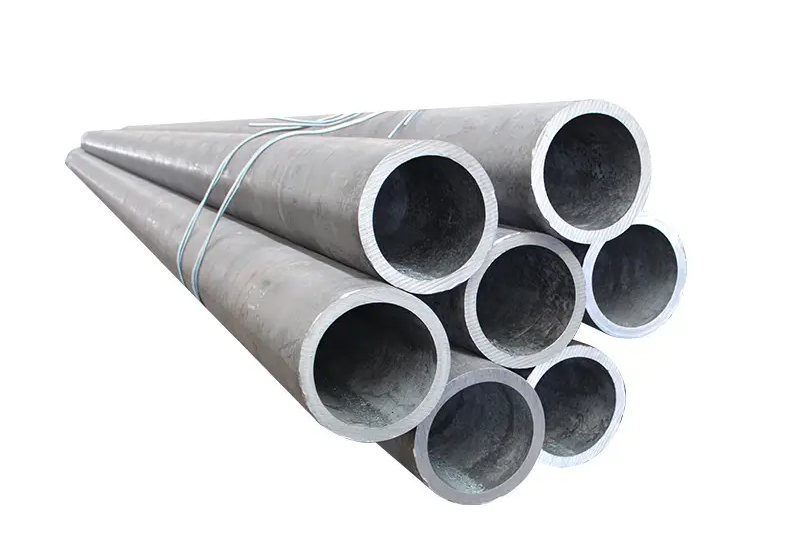
Метод зварювання товстостінних трубопроводів з товстого тиску домашньої сталі A335 P91: область техніки – Цей винахід стосується сфери зварювальної технології, особливо пов'язаний з методом зварювання товстостінних трубопроводів високого тиску.
У нас є найбільший запас безшовних труб із легованої сталі ASTM A335 P91
Труба з легованої сталі A 335 P91:
Розмір : 1/2″ для 24 “І від & NB
Розклад: СЧ20, Сч30, Труба sch40.
тип : Зварні / виготовлений / Безшовні
Довжина : Одинарний випадковий, Подвійний випадковий & Довжина стрижки.
кінець : Простый Кінець, Скошений кінець.
Матеріали :
Труба з легованої сталі A335 P91 – AS труба A335 P91
ASTM A335, Гр. P5, P9, P11, P12, P21, P22 & P91
ASTM A335 P91 Склад хромованої труби Склад
| Сорт | США | C≤ | MN | Р≤ | З≤ | Si≤ | Кл | МО |
| P1 | К11522 | 0.10~0,20 | 0.30~0,80 | 0.025 | 0.025 | 0.10~0,50 | - | 0.44~0,65 |
| P2 | К11547 | 0.10~0,20 | 0.30~0,61 | 0.025 | 0.025 | 0.10~0,30 | 0.50~0,81 | 0.44~0,65 |
| P5 | K41545 | 0.15 | 0.30~0,60 | 0.025 | 0.025 | 0.50 | 4.00~6.00 | 0.44~0,65 |
| P5b | K51545 | 0.15 | 0.30~0,60 | 0.025 | 0.025 | 1.00~2,00 | 4.00~6.00 | 0.44~0,65 |
| P5c | K41245 | 0.12 | 0.30~0,60 | 0.025 | 0.025 | 0.50 | 4.00~6.00 | 0.44~0,65 |
| P9 | S50400 | 0.15 | 0.30~0,60 | 0.025 | 0.025 | 0.50~1,00 | 8.00~10.00 | 0.44~0,65 |
| P11 | К11597 | 0.05~0,15 | 0.30~0,61 | 0.025 | 0.025 | 0.50~1,00 | 1.00~1,50 | 0.44~0,65 |
| P12 | К11562 | 0.05~0,15 | 0.30~0,60 | 0.025 | 0.025 | 0.50 | 0.80~1,25 | 0.44~0,65 |
| P15 | К11578 | 0.05~0,15 | 0.30~0,60 | 0.025 | 0.025 | 1.15~1,65 | - | 0.44~0,65 |
| P21 | K31545 | 0.05~0,15 | 0.30~0,60 | 0.025 | 0.025 | 0.50 | 2.65~3,35 | 0.80~1,60 |
| P22 | К21590 | 0.05~0,15 | 0.30~0,60 | 0.025 | 0.025 | 0.50 | 1.90~2,60 | 0.87~1,13 |
| P91 | K91560 | 0.08~0,12 | 0.30~0,60 | 0.020 | 0.010 | 0.20~0,50 | 8.00~9.50 | 0.85~1,05 |
| P92 | K92460 | 0.07~0,13 | 0.30~0,60 | 0.020 | 0.010 | 0.50 | 8.50~9.50 | 0.30~0,60 |
Стандарт складу труб A335 Gr P91
| Сі, % | Кл, % | C, % | МО, % | MN, % | P, % | N, % | S, % | V, % | Н, % | NB, % | Ал, % |
| 0.2 для 0.5 | 8.0 для 9.5 | 0.08 для 0.12 | 0.85 для 1.05 | 0.3 для 0.6 | 0.02 | 0.03 для 0.07 | 0.01 | 0.18 для 0.25 | 0.4 | 0.06 для 0.10 | 0.04 |
ASTM A335 P91 Таблиця механічної міцності труб
| Подовжена | Властивості розтягування | НВ | Властивості врожайності |
| 20 | 585 | 250 | 415 |
Еквівалентна марка матеріалу труб SA335 Gr P91
| США | ASTM | Еквівалент Матеріал | АСМЭ |
|---|---|---|---|
| K91560 | A335 P91 | K90901, T91, 1.4903, X10CrMoVNb9-1 | SA335 P 91 |
| ASTM | АСМЭ | ВІН Г 3458 | США | BS | DIN | ISO | ABS | NK | LRS |
|---|---|---|---|---|---|---|---|---|---|
| A335P9 | SA335P9 | STPA 26 | S50400 | 3604 P1 629-470 | 2604 II TS38 |
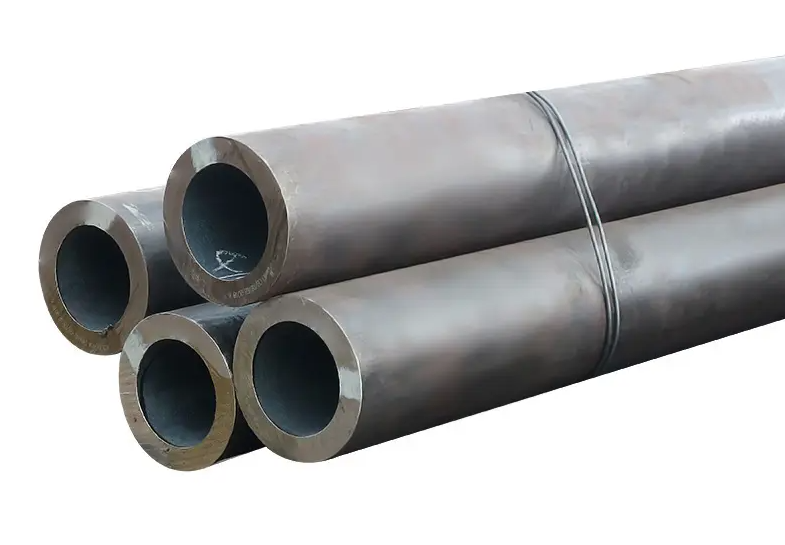
Фон: Сталь A335 P91 є модифікованою сталлю 9Cr-1Mo, насамперед інкорпо
A335P11 A335P91 A335P22 40cr 10CrMO910 35crmo 27SiMn Q345B 16Mn зварна труба з легованої сталі
класифікація елементів сплаву, таких як V і Nb, в оригінальну мартенситну жаростійку сталь 9Cr-1Mo. Ця сталь має чудову стійкість до високотемпературного окислення, стійкість до високотемпературної парової корозії, і стійкість до повзучості, ефективно знижуючи масу конструкції і знаходячи широке застосування у великих котельних агрегатах, системи трубопроводів, і нафтохімічна промисловість. однак, завдяки мартенситній природі сталі A335 P91 з повітряним охолодженням, він демонструє нижчу пластичність і гіршу зварюваність, висувають високі вимоги до процесів зварювання, ударна в'язкість зварних з'єднань, крихкість зварного шва, Термічна обробка після зварювання, і зони термічного впливу зварних швів. Традиційне зварювання сталі A335 P91 зазвичай використовує ручне дугове газове зварювання вольфрамом (GTAW) для кореневого зварювання та ручного дугового зварювання в екранованому металі (SMAW) для наповнення та закупорювання, що потребує суворого контролю за енергією лінії, температура попереднього нагріву, і температура між проходами під час процесу зварювання. Цей метод вимагає високого рівня зварювального середовища та кваліфікації зварника, і ефективність ручного зварювання надзвичайно низька, забираючи час і зусилля, серйозне обмеження просування труб, впливають на графіки будівництва, і особливо помітно для товстостінних трубопроводів великого діаметру.
Тому, раціональний вибір параметрів і процесів зварювання для сталі A335 P91 і розробка умов процесу зварювання, придатних для виробництва, мають значну практичну та економічну цінність.
Зміст винаходу: Для усунення недоліків існуючої техніки, Технічна задача, яка вирішується винаходом, полягає в розробці способу зварювання товстостінних трубопроводів високого тиску з вітчизняної сталі А335 Р91., з метою підвищення ефективності зварювання та зварювання якість, знизити витрати на будівництво і трудомісткість, та покращити робоче середовище.
Для досягнення вищезазначених цілей, У цьому винаході використовуються наступні технічні рішення:
Метод зварювання товстостінних трубопроводів з товстого тиску домашньої сталі A335 P91, що складається з наступних послідовних кроків:
(1) Обробка скосу перед зварюванням: Обробіть зону зварювання зварюваного трубопроводу подвійним V-подібним скісом, виконайте проникаючу перевірку поверхні фаски, щоб переконатися у відсутності поверхневих тріщин, і очистіть фаску та поверхню від іржі, масло, і оксиди в межах 20 мм з обох боків фаски;
Продовження методу зварювання товстостінних сталевих труб високого тиску A335 P91 вітчизняного виробництва:
- Термічна обробка після зварювання: Після зварювання, заклейте обидва кінці труби та використовуйте електричне нагрівання, щоб нагріти область з обох сторін зварного шва, принаймні 3 помножити на ширину зварного шва і не менше 25 мм. Нагрійте ділянку до температури 750-770°C і витримайте 2.5-4 години, в залежності від товщини труби.
Зверніть увагу, що температура в цьому методі контролюється за допомогою інфрачервоного термометра. Цей метод зварювання товстостінних сталевих труб високого тиску A335 P91 має наступні переваги:
-
Використання багатошаровості, багатопрохідне зварювання зменшує площу поперечного перерізу кожного зварного шару, підвищення в'язкості зварного з'єднання і уникнення звуження зони теплового впливу в товстих зварних швах, а також розм'якшення зварного з'єднання при тривалій експлуатації при високих температурах.
-
Ручне газове дугове зварювання вольфрамом (GTAW) для кореневого зварювання має меншу швидкість зварювання, а герметизація обох кінців труби допомагає контролювати температуру між шарами. Автоматичне зварювання під флюсом (Бачив) для заповнення та покриття шарів має більшу швидкість зварювання та більший струм, швидше віддаючи тепло. Принаймні один кінець труби повинен бути розгерметизований, і безперервне зварювання може виконуватися без необхідності контролю температури між шарами.
-
Використання зварювальних дротів малого діаметра (не більше 2,5 мм) флюс з низьким вмістом водню для зварювання може зменшити лінійну енергію під час процесу зварювання, покращити швидкість наплавлення, покращити зерна основного матеріалу, і зменшити ймовірність дефектів, таких як пористість і тріщини в зварних швах.
-
У вітряному середовищі, захисний ефект автоматичного зварювання під флюсом кращий, ніж інші процеси дугового зварювання.
-
У порівнянні з традиційними методами ручного зварювання, цей метод ефективно скорочує цикл термічної обробки та зварювання, покращує зварювання якість і ефективність зварювання, знижує трудомісткість, і економить витрати на будівництво.
Приклад реалізації 1: В якості базового матеріалу використано вітчизняний трубопровід А335П91 DN350, прийнятий наступний метод зварювання:
(1) Зона зварювання труби, що зварюється, обробляється подвійною V-подібною канавкою, як показано на малюнку 1, з висотою тупого краю 1 мм, нижній кут 60±5° у напрямку довжини труби, висота 15 мм, і верхній кут 78-82° в напрямку довжини труби. Поверхня канавки перевіряється кольоровою, щоб переконатися, що на канаві немає поверхневих тріщин. Поверхня іржавіє, масляні плями, оксиди, д. в межах 20 мм з обох сторін канавки очищаються;
(2) Дві секції зварної труби збираються, стежачи за тим, щоб торцевий зазор стикового з’єднання становив 3-6 мм, висота рівна, і зміщення не перевищує 1 мм;
(3) Для нижнього зварювання використовується ручне аргонодугове зварювання GTAW. Перед зварюванням, кінцеві отвори труби, що зварюється, заблоковані, а внутрішня стінка або задня частина шва заповнена аргоном для захисту. Сталева труба, що зварюється, попередньо розігрівається, і температура канавки контролюється в режимі реального часу за допомогою інфрачервоного термометра. Коли температура досягне 160 ℃, починається зварювання, за допомогою зварювального дроту ER90S-B9 діаметром для зварювання трьох шарів. Параметри процесу вибираються наступним чином: DC позитивне підключення джерела живлення, зварювальний струм 118А, напруга дуги 14В, і швидкість зварювання 3-10см/хв. Під час ручного аргонодугового зварювання GTAW слід звернути увагу на наступні моменти: A) Поверхня заготовки, що зварюється, не повинна запалюватися дугою, перевірено на струм, або тимчасово приварені до опори чи затискача;b) Ручне аргонодугове зварювання починається з найнижчої точки труби, що зварюється, і симетрично зварюється двома людьми, зі зварювальними швами в шаховому порядку між 100-150 мм; C) Під час ручного аргонодугового зварювання, температуру попереднього нагріву з обох боків канавки слід контролювати в режимі реального часу, і температура попереднього нагрівання повинна суворо контролюватися між 150 ℃ і 200 ℃; D) Під час ручного аргонодугового зварювання, необхідно вжити заходів захисту від вітру, а швидкість вітру в середовищі зварювання не повинна перевищувати 2 м/с. У трубі, що зварюється, не повинно бути тяги, і вологи, дощ, і слід вжити снігозахисних заходів;
(4) Автоматичне зварювання під флюсом SAW використовується для заповнення та покриття. Перед автоматичним зварюванням під флюсом заповнення та покриття, принаймні один кінець труби, що зварюється, розблокований, а зона зварювання попередньо нагрівається. Коли температура досягне 200 ℃, починається безперервне зварювання, з використанням зварювального дроту EB9 діаметром та зварювального флюсу MARATHON543 для багатошарового та багатоходового зварювання заповнення та покриття. Параметри зварювання SAW вибираються наступним чином: Зворотне підключення джерела живлення постійного струму, зварювальний струм 280А, напруга дуги 28В, і швидкість зварювання 25-45см/хв.
Під час автоматичного зварювання під флюсом SAW слід звернути увагу на наступні моменти:
A) Зварювальний дріт повинен бути чистим і сухим, а зварювальний флюс слід зберігати в сухому місці, щоб запобігти вбиранню вологи;
b) Зварювальний дріт слід подавати плавно і рівномірно, і зварювальний флюс слід додавати вчасно, щоб забезпечити зварювання якість;
C) Швидкість зварювання повинна бути стабільною, і зварювальний пістолет слід тримати перпендикулярно до осі труби, щоб забезпечити консистенцію зварного шва;
D) Зварювальний шлак необхідно своєчасно видаляти після кожного шару зварювання, і поверхню зварного шва слід очистити дротяною щіткою або шліфувальним кругом, щоб забезпечити якість наступного шару зварювання;
Е) Процес зварювання слід контролювати в режимі реального часу, і параметри зварювання повинні бути скориговані вчасно відповідно до фактичної ситуації, щоб забезпечити якість зварювання. Після завершення зварювання, зварювальну поверхню слід перевірити візуально та за допомогою неруйнівного контролю, щоб переконатися у відсутності таких дефектів, як тріщини, пори, шлакові включення, і неповне проникнення. Нарешті, зварне з'єднання повинно бути термічно оброблено відповідно до вимог процесу для усунення зварювальних напруг і поліпшення механічних властивостей зварного з'єднання.
Приклад реалізації 2: Використання імпортованого трубопроводу A335P91 DN500 як основного матеріалу, прийнятий наступний метод зварювання:
(1) Зона зварювання труби, що зварюється, обробляється подвійною V-подібною канавкою, як показано на малюнку 1, з висотою тупого краю 1,5 мм, нижній кут 60±5° у напрямку довжини труби, висота 20 мм, і верхній кут 78-82° в напрямку довжини труби. Поверхня канавки перевіряється кольоровою, щоб переконатися, що на канаві немає поверхневих тріщин. Поверхня іржавіє, масляні плями, оксиди, д. в межах 20 мм з обох сторін канавки очищаються;
(2) Дві секції зварної труби збираються, забезпечуючи торцевий зазор стикового з’єднання 4-8 мм, висота рівна, і зміщення не перевищує 1,5 мм;
(3) Автоматичне зварювання під флюсом SAW використовується для нижнього зварювання. Перед зварюванням, кінцеві отвори труби, що зварюється, заблоковані, а внутрішня стінка або задня частина шва заповнена аргоном для захисту. Сталева труба, що зварюється, попередньо розігрівається, і температура канавки контролюється в режимі реального часу за допомогою інфрачервоного термометра. Коли температура досягне 200 ℃, починається зварювання, з використанням зварювального дроту EB9 діаметром та зварювального флюсу MARATHON543 для багатошарового та багатоходового зварювання заповнення та покриття. Параметри зварювання SAW вибираються наступним чином: Зворотне підключення джерела живлення постійного струму, зварювальний струм 350А, напруга дуги 32В, і швидкість зварювання 25-45см/хв. Під час автоматичного зварювання під флюсом SAW слід звернути увагу на наступні моменти: A) Зварювальний дріт повинен бути чистим і сухим, а зварювальний флюс слід зберігати в сухому місці, щоб запобігти вбиранню вологи; b) Зварювальний дріт слід подавати плавно і рівномірно, і зварювальний флюс слід додавати вчасно, щоб забезпечити якість зварювання; C) Швидкість зварювання повинна бути стабільною, і зварювальний пістолет слід тримати перпендикулярно до осі труби, щоб забезпечити консистенцію зварного шва; D) Зварювальний шлак необхідно своєчасно видаляти після кожного шару зварювання, і поверхню зварного шва слід очистити дротяною щіткою або шліфувальним кругом, щоб забезпечити якість наступного шару зварювання; Е) Процес зварювання слід контролювати в режимі реального часу, і параметри зварювання повинні бути скориговані вчасно відповідно до фактичної ситуації, щоб забезпечити якість зварювання.
(4) Автоматичне зварювання під флюсом SAW використовується для заповнення та покриття. Перед автоматичним зварюванням під флюсом заповнення та покриття, принаймні один кінець труби, що зварюється, розблокований, а зона зварювання попередньо нагрівається. Коли температура досягне 250 ℃, починається безперервне зварювання, з використанням зварювального дроту EB9 діаметром та зварювального флюсу MARATHON543 для багатошарового та багатоходового зварювання заповнення та покриття. Параметри зварювання SAW вибираються наступним чином: Зворотне підключення джерела живлення постійного струму, зварювальний струм 450А, напруга дуги 36В, і швидкість зварювання 25-45см/хв. Після завершення зварювання, зварювальну поверхню слід перевірити візуально та за допомогою неруйнівного контролю, щоб переконатися у відсутності таких дефектів, як тріщини, пори, шлакові включення, і неповне проникнення. Нарешті, зварне з'єднання повинно бути термічно оброблено відповідно до вимог процесу для усунення зварювальних напруг і поліпшення механічних властивостей зварного з'єднання.

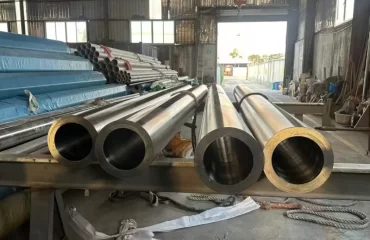
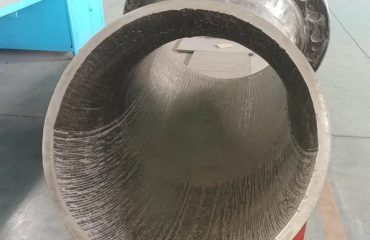
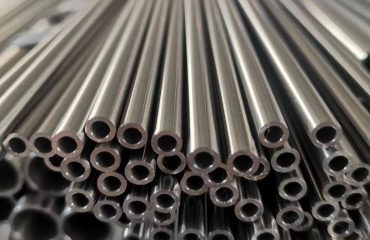
Ви повинні бути увійшли в Щоб залишити коментар.